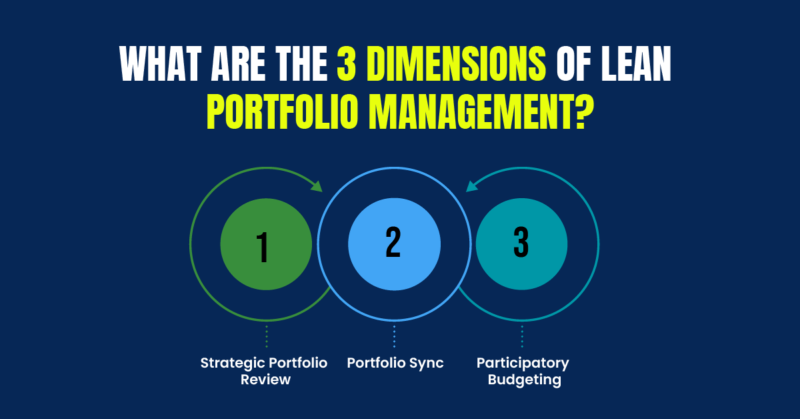
Agilemania
Agilemania, a small group of passionate Lean-Agile-DevOps consultants and trainers, is the most tru... Read more
![]() Get Your AI-Enabled Scrum Master Certification for Just ₹1,500 (Save 85%)!
Get Your AI-Enabled Scrum Master Certification for Just ₹1,500 (Save 85%)!
Scrum.Org
SAFe®
ICAgile
Scrum Alliance
Technical Agility
Kanban
Business Analysis
Project Management
AI-Enabled
Scrum.Org
SAFe®
ICAgile
Scrum Alliance
Technical Agility
Kanban
Business Analysis
Project Management
AI-Enabled

Agilemania
Agilemania, a small group of passionate Lean-Agile-DevOps consultants and trainers, is the most tru... Read more

LPM, also known as Lean Portfolio management, refers to how senior leadership uses lean principles and systems thinking approaches to align strategy with execution. Portfolio management teams apply these principles and approaches to strategy and investment funding, Agile portfolio operations, and governance.
The primary goal of Lean portfolio management (LPM) Training, is to align agile development with business strategy and the primary focus of the company is to deliver value through products and solutions to customers. Incorporating agile and lean portfolio management offer a path to improving business agility.
Lean Portfolio Management (LPM) involves connecting strategy to execution by using lean principles. Budgets are allocated to execute an enterprise's strategy by portfolio management teams. An LPM portfolio of investments is creatively determined and actively managed throughout its investment life cycle, just like any other portfolio. Agile development and product development are aligned with business strategy through LPM, driving value to customers with products and solutions. Business agility can be improved by combining LPM and agile development practices.
The lean portfolio leadership team creates the goal of your company. Your team is granted funds that are decided by strategic needs, and they make sure your goals align with those needs. To synchronize and coordinate the planning and feedback loops, the leadership team makes choices at a fixed cadence that is followed by both the operations (the tasks they carry out) and the governance (the reviews they conduct).
In order to connect strategy to execution The leadership team evaluates these targets on a regular basis
1. Start making a goal: Establish (and reevaluate every three months) the outcome-based goals and strategic themes.
2. Look for opportunities: Convert new ideas into investment candidates that are linked to the strategic mission.
3. Target value delivery: Create roadmaps based on market needs and anticipated effort size, which should be gathered during agile estimation and planning.
4. Value optimization: Establish clear priorities for initiatives in order to: (1) drive detailed planning for the next quarter and (2) balance the roadmap against known capacity constraints.
5. Examine market fit: "Go see" the incremental value demonstrated in team demos and validate the value hypotheses.
The leadership team facilitates periodic reviews to achieve enterprise agility:
1. Review of strategy alignment: Confirm that the work is in line with the strategic intent once a quarter.
2. Examining the portfolio budget: Confirm that the budget allocations funding the team-of-teams (and empowering their decentralized decision-making) are best supporting the mission once a quarter.
3. Retrospective of the Portfolio Team: Look for ways to improve the way the portfolio leadership team operates, makes decisions, and achieves continuous value flow once a quarter.
4. Financial analysis of the portfolio: Compare spending trends on initiatives to targets and guardrails once a month to close the loop on agile budgeting Portfolio roadmap review. Share the updated initiative roadmap with all stakeholders once a month.
5. Examining investment opportunities: Approve funding for new investment opportunities based on their business case once a week (or recalibrate past funding decisions based on new feedback)
Lean is not just a method, but it is a philosophy that we are trying to spread in our business. It's not an easy path and requires more than just learning a new method of business management.

Lean Portfolio Management is the practice of managing a portfolio of projects in order to achieve the desired outcome. It is a part of the Lean Enterprise movement, which seeks to eliminate waste from business processes through the application of lean principles. The three dimensions of Lean Portfolio Management are:
In a strategic portfolio review event, all strategies, implementations, and budgets are aligned continuously. The event aims to achieve and advance the portfolio vision. Typically, PI Planning is held quarterly, at least one month before the next PI Planning, to enable value streams to prepare and respond to any changes.
The portfolio sync provides visibility into how well the portfolio is progressing toward meeting its objectives. This event has a more operational focus than the strategic portfolio review, which typically occurs monthly. Topics include reviewing epic implementation, the status of KPIs, addressing dependencies, and removing impediments.
SAFe® PB is a participatory budgeting event that involves stakeholders in deciding how to invest in a portfolio of solutions and epics. In order to finalize the value stream budget, the resulting data is used. A PB budget is typically adjusted twice a year. In the absence of frequent adjustments, spending is fixed for too long, limiting agility. They may freeze up and become indecisive, unable to commit to any near-term course of action.
Both LPM and traditional PPM share the same goals, but the difference is that they have some significant differences that offer some substantial incremental advantages. In Lean Portfolio Management (LPM), senior leadership ties strategy to execution by applying lean principles.
The primary focus of lean portfolio management is to align Lean-Agile development with business strategy. The concept of lean portfolio management involves applying lean principles to the traditional functions of portfolio management, as well as applying a lean-agile mindset. In order to implement Lean Portfolio Management, we must shift from annual planning cycles with fixed scope expectations to more agile and fluid rolling-wave planning managed by a Portfolio Kanban system.
It is common for organizations that define projects for over a year to get trapped in situations where teams are encouraged to achieve out-of-date goals rather than deliver value and seek early feedback. A lean portfolio management method helps an organization achieve the following:
If you are someone who is looking for LPM certifications? Then look no further than Agilemania. Here, the trainers have years of experience in SAFe®, agile, and DevOps. By offering quality training, consulting, and coaching to professionals globe-wide, they catalyze massive growth in organizations.
Their consultants are approved by recognized accreditation bodies like Scrum Alliance, International Consortium of Agile (ICAgile), Scrum.Org, Leading Scaled Agile (SAFe®), and Large-Scale Scrum (LeSS). They used to provide the best training so that by gaining knowledge about SAFe® and its courses, one can become a great servant leader for his organization.
Agilemania, a small group of passionate Lean-Agile-DevOps consultants and trainers, is the most trusted brand for digital transformations in South and South-East Asia.
WhatsApp Us

We will get back to you soon!
For a detailed enquiry, please write to us at connect@agilemania.com

